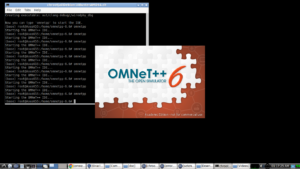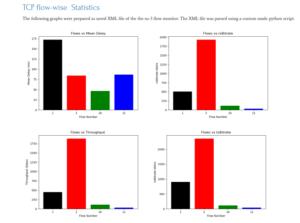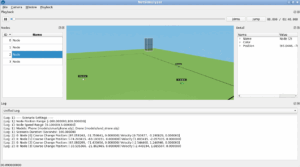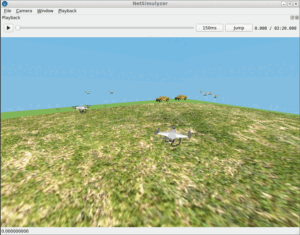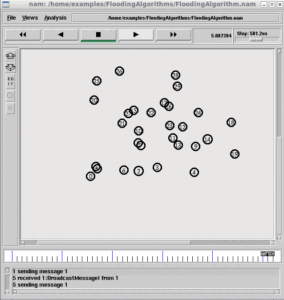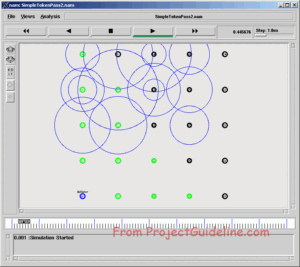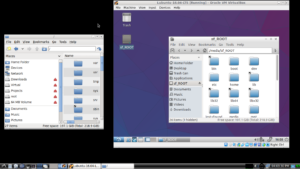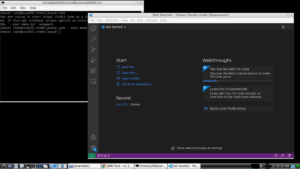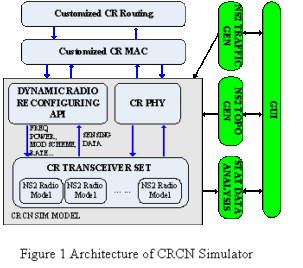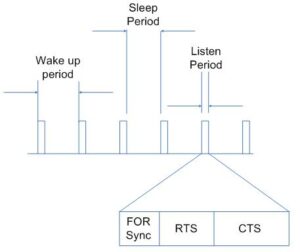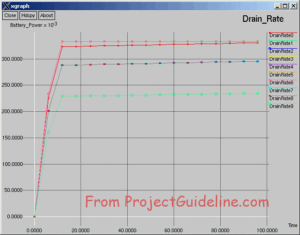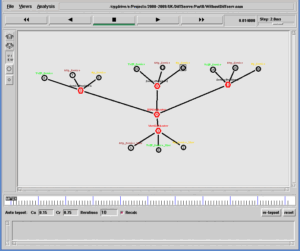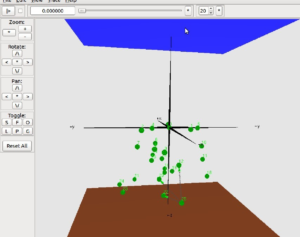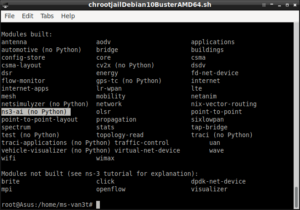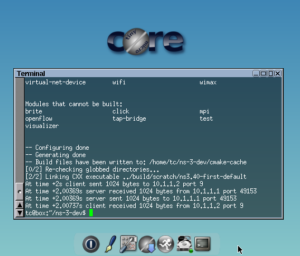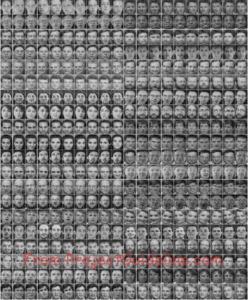Public Safety Communications (PSC) in ns-3.
The support for public safety communications (PSC) in ns-3 relies on the newer capabilities introduced in 3GPP Release 12 and subsequent releases for 4G LTE systems. This includes functionalities like Device-to-Device (D2D) communications over sidelink and the mission-critical push-to-talk (MCPTT) application.
Public safety communications features are based on development led by the Wireless Networks Division of the U.S. National Institute of Standards and Technology (NIST). The CTTC (Centre Tecnològic de Telecomunicacions de Catalunya) and the University of Washington played a crucial role in facilitating the integration of the ProSe module with the LTE and building modules within the framework.
Their contributions extended to the development of additional examples and tests, as well as the advancement of on-network support for mission-critical push-to-talk (MCPTT) functionality. This collaborative work was conducted under the financial assistance provided by the U.S. Department of Commerce, National Institute of Standards and Technology.
The support for PSC in ns-3 is distributed across the following modules:
- psc: This module provides support for models and scenarios specific to public safety communications.
- lte: It offers support for ProSe (sidelink communications) in PSC.
- buildings: This module supports pathloss models, including building effects, as defined by 3GPP and relevant to public safety scenarios.
- antenna: It provides a parabolic antenna model as described in 3GPP document TR 36.814.
- sip: This module includes the Session Initiation Protocol (SIP) model for PSC.
Documentation for the PSC features implemented in the ns-3 lte, buildings, antenna, and sip modules can be found in their respective module documentation. However, this article specifically focuses on the ns-3 psc module.
Currently, a significant portion of the code related to public safety communications resides in the ProSe and UE-to-Network relay implementation within the lte module. This is because the ProSe services, such as sidelink communications, discovery, and synchronization, are closely intertwined with the LTE models and are challenging to separate into an independent module. Therefore, features essential to the low-level operation of ProSe in LTE can be found in the lte module.
Additional Components and Functionalities of PSC
In addition, the psc module encompasses several additional components and functionalities, which are as follows:
- A comprehensive model of mission-critical push-to-talk (MCPTT), suitable for both off-network and on-network scenarios. This model enables realistic simulations of MCPTT communication in various public safety contexts.
- A UDP-based application designed to generate traffic models that facilitate many-to-many communication patterns within a given scenario. This application allows for the simulation of high-volume data exchanges among multiple entities.
- An energy consumption model specifically tailored for flying unmanned aerial vehicles (UAVs) with single or multiple rotors. This model accurately estimates the energy consumption associated with UAV operations, aiding in the assessment of their endurance and performance.
- The inclusion of a new HTTP application enables simulations involving HTTP-based communication protocols commonly used in public safety scenarios.
- A video streaming model that replicates the transmission and reception of video streams, allowing for the analysis and evaluation of video streaming performance within the context of public safety applications.
- A configurable generic client/server application, offering a versatile framework that supports the development and testing of various client/server communication scenarios relevant to public safety communications.
- A dedicated framework for creating incident scenarios, facilitating the development and simulation of realistic incident scenarios that can be used to assess the performance and effectiveness of public safety communication systems. Additionally, a detailed large-scale example is provided to illustrate the capabilities of the framework.
These additions within the psc module enhance the overall functionality and versatility of ns-3 for public safety communications simulations, enabling more comprehensive and accurate assessments of various scenarios and applications. Additional information about PCS can be found at [3].
Device-to-Device (D2D) communications
Device-to-Device (D2D) communications in LTE refers to the capability of devices to establish direct connections with each other using the Sidelink (SL) interface. This technology allows devices within close proximity to communicate directly without the need to rely on the traditional cellular network infrastructure.
In D2D communications, devices equipped with LTE capabilities can establish direct connections with other nearby devices, bypassing the base station. This enables them to exchange data, voice, or multimedia content directly, enhancing communication efficiency and enabling new use cases and applications.
The Sidelink interface, also known as the LTE Direct interface, facilitates D2D communication by utilizing the unlicensed spectrum or a dedicated portion of the licensed spectrum. Devices use this interface to establish a direct link with each other, creating a peer-to-peer communication channel.
D2D communications via Sidelink in LTE offer several benefits:
- Improved proximity-based services: Devices can share information, such as location data, presence information, or local content, directly with nearby devices. This enables applications like proximity-based advertising, social networking, and collaborative services.
- Enhanced coverage and capacity: D2D communications can extend coverage in areas with poor network coverage or high congestion. Devices can act as relays, forwarding data between devices to improve overall network capacity and coverage.
- Reduced latency and energy consumption: By establishing direct connections, D2D communications can reduce latency as there is no need to transmit data through the base station. This can improve real-time communication and reduce energy consumption by avoiding unnecessary network hops.
- Public safety and emergency services: D2D communications play a critical role in public safety scenarios. Devices can directly communicate with each other in emergency situations, enabling coordination and information sharing among first responders and individuals in the vicinity.
LTE-based D2D communications using the Sidelink interface provide a flexible and efficient way for devices to directly communicate with each other. This technology opens up new possibilities for proximity-based services, improves network coverage and capacity, and facilitates communication in emergency situations.
Installing psc-ns3.
Note: psc-ns-3 is a project based on a dev version of ns-3. Exactly saying, while writing this article, as per the release note found in that ns3-dev version, it seems to be ns3.36.1. So, in future, they may update this to the latest dev version of ns-3.
Step 1: Cloning the Project
First, we should clone the psc-ns3 project.
$ git clone https://github.com/usnistgov/psc-ns3.git

Step 2: Configure psc-ns3
$ ./ns3 configure


Step 3: Building psc-ns3
$ ./ns3 build -j8

The following screenshot presents the overall output from configuring psc-ns3 to the successful compilation of psc-ns3

Step 4: Testing the psc-ns3 installation by running an example
Now we may run an example psc application to test the working on psc-ns3 installation.
$ ./ns run example-psc-application

Step 5: Running more Sophisticated Examples
The following is the NetSimylylzer output of a large-scale school shooting incident PSC-ns-3 simulation example presented in[4]. The whole idea of this simulation model has been discussed in [5].

To recreate a simulation output like the above one, we should do the following:
Visualise a simulation in 3D, one should install NetSimulyzer add-on module and NetSimulyzer 3D Tool as mentioned in the following articles:
Installing NetSimulyzer 3D Visualization Support Add-on Module in ns-3 under Debian/Ubuntu
Installing NetSimulyzer 3D Visualization Tool under Debian/Ubuntu
References
- https://www.nist.gov/services-resources/software/public-safety-communications-simulation-tool-ns3-based
- https://github.com/usnistgov/psc-ns3
- https://github.com/usnistgov/psc-ns3/tree/psc-6.0/src/psc/doc/source
- https://github.com/usnistgov/psc-ns3/blob/psc-6.0/src/psc/doc/source/psc-scenario.rst
- Rouil, R., Izquierdo Manzanares, A., Liu, C. and Garey, W., “Modeling Public Safety Communication Scenarios: School Shooting Incident”, NIST Technical Note (NIST TN) – 2186, October 2021.
- https://www.projectguideline.com/installing-netsimulyzer-3d-visualization-support-module-in-ns-3-under-debian-ubuntu/
- https://www.projectguideline.com/installing-netsimulyzer-3d-visualization-tool-under-debian-ubuntu/

 Discuss Through WhatsApp
Discuss Through WhatsApp